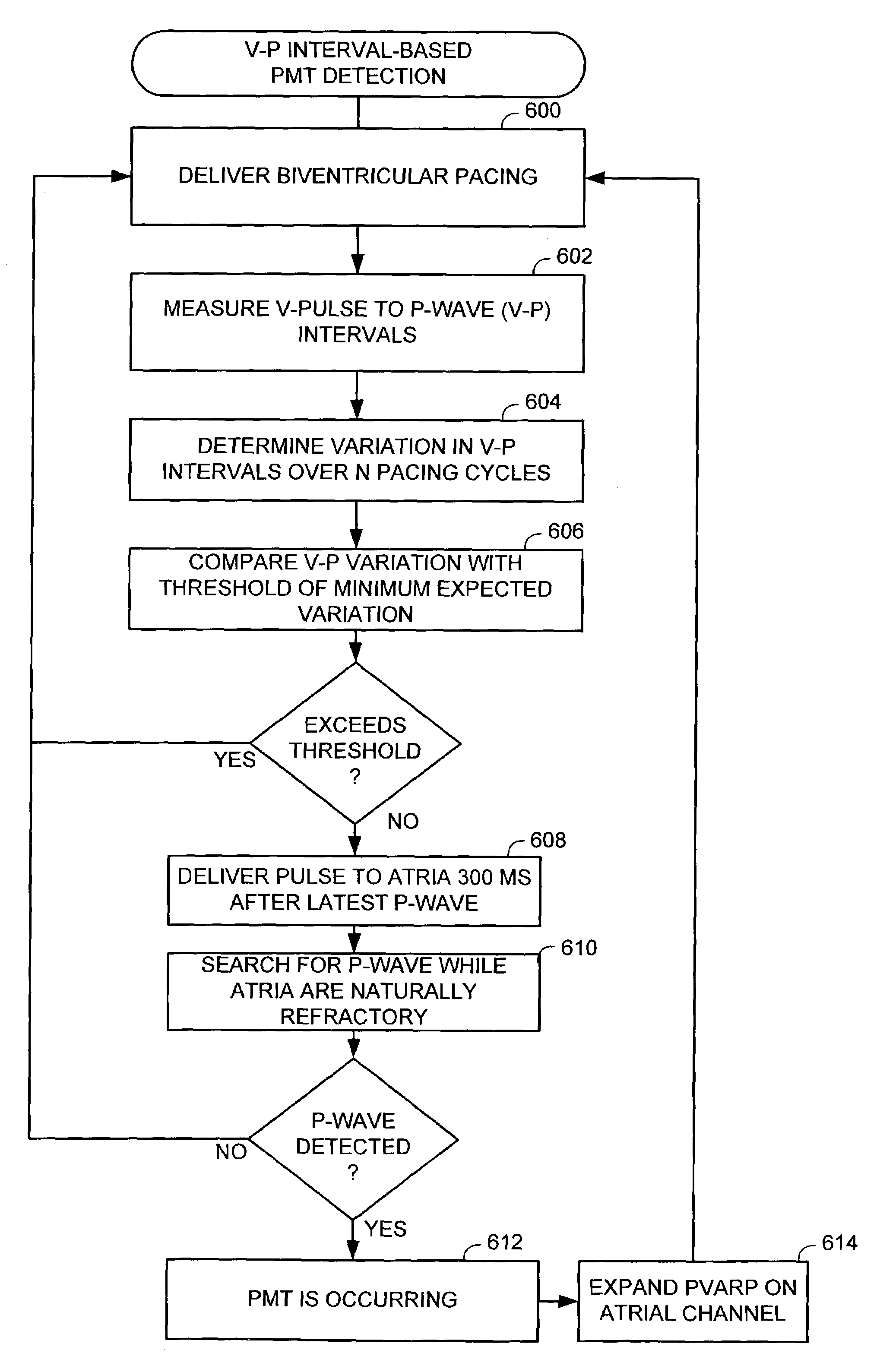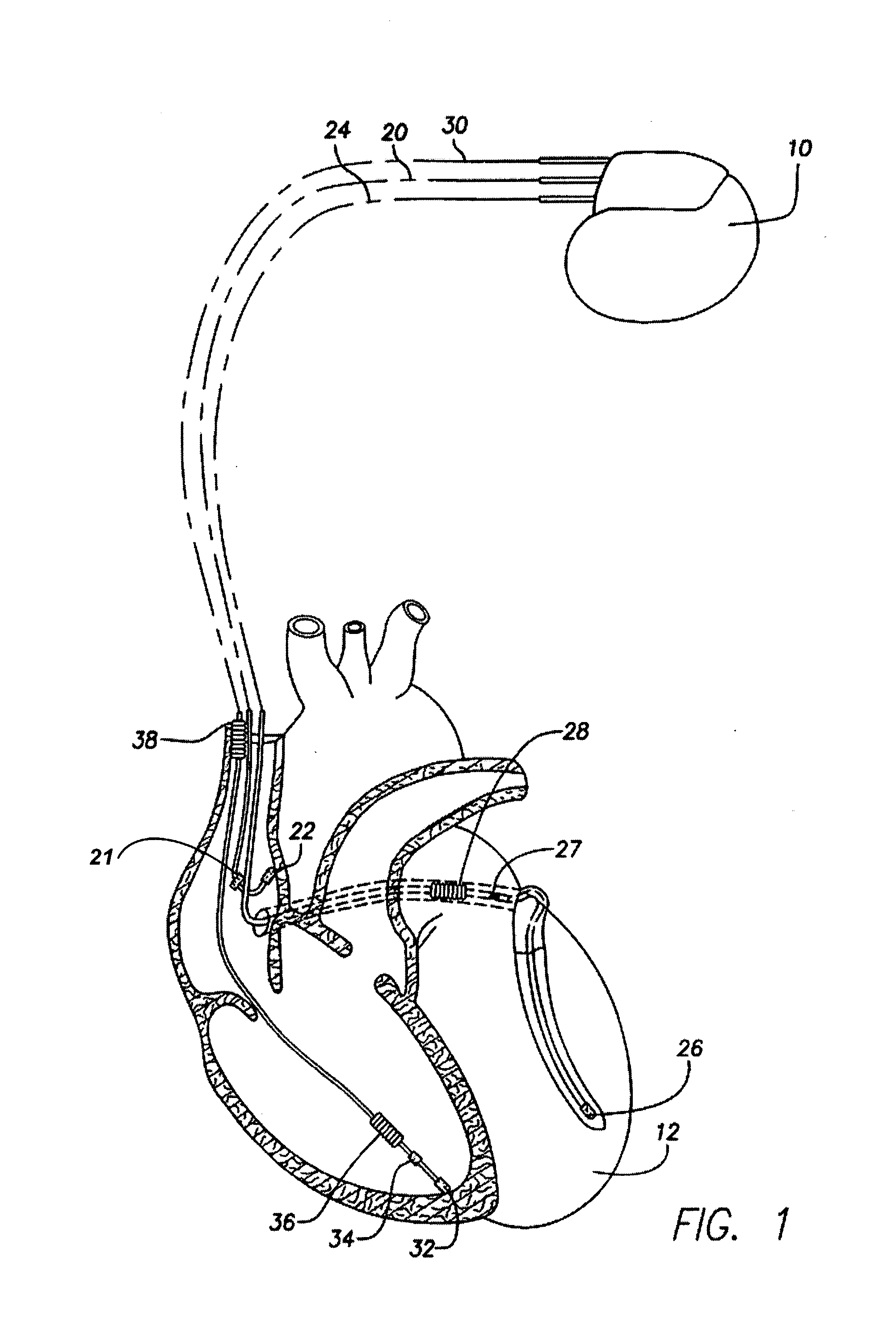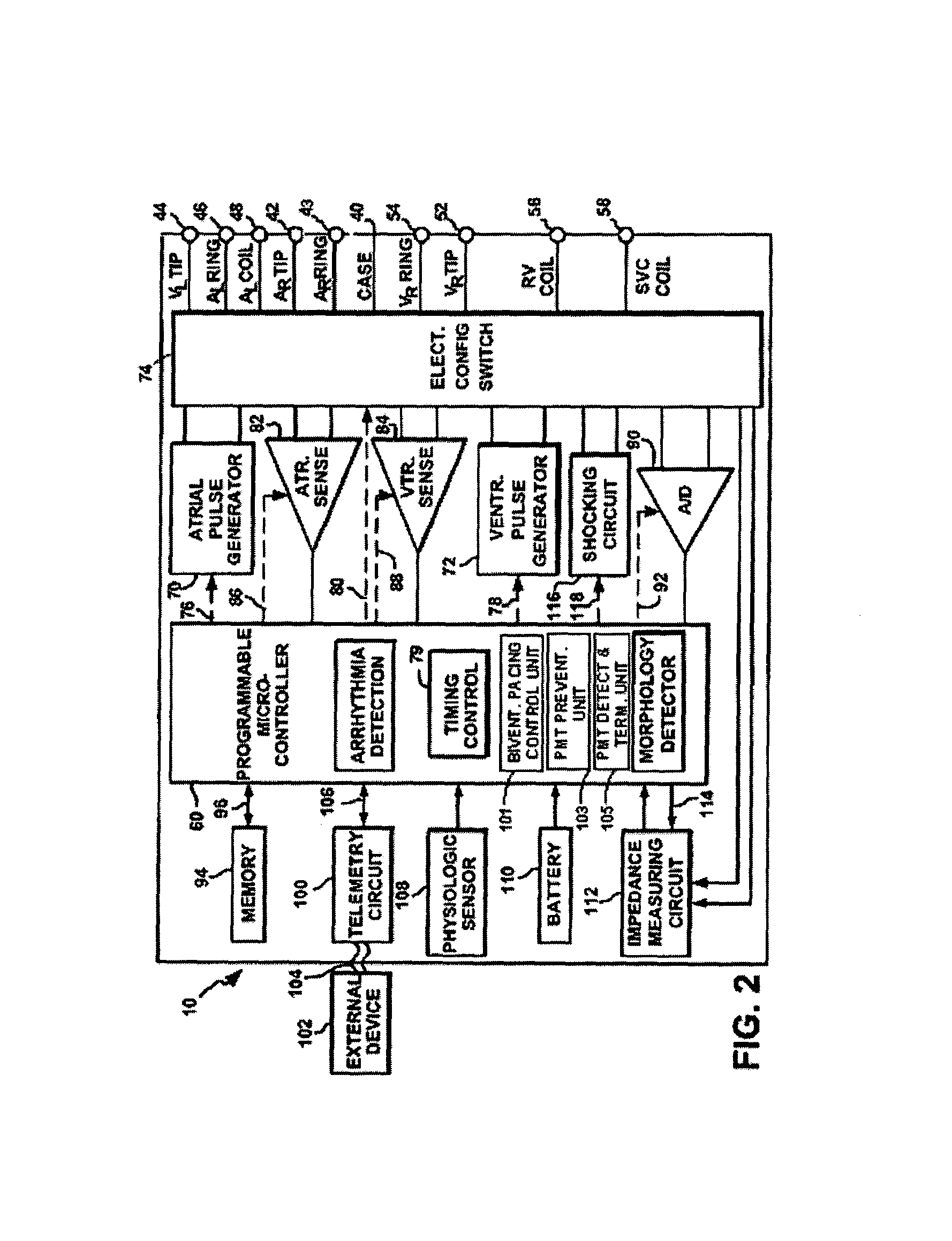System and methods for preventing, detecting, and terminating pacemaker mediated tachycardia in biventricular implantable cardiac stimulation device
a pacemaker-mediated tachycardia and implantable cardiac stimulation technology, which is applied in the field of implantable cardiac stimulation devices, can solve the problems of ventricular fibrillation, ventricular fibrillation, ventricular tachycardia, if not terminated, and death of patients, so as to reduce the risk of pmt onset, reduce the risk of pmt, and reduce the risk of ventricular tachycardia
- Summary
- Abstract
- Description
- Claims
- Application Information
AI Technical Summary
Benefits of technology
Problems solved by technology
Method used
Image
Examples
Embodiment Construction
[0041]The following description is of the best mode presently contemplated for practicing the invention. This description is not to be taken in a limiting sense but is provided merely for the purpose of describing the general principles of the invention. The scope of the invention should be ascertained with reference to the issued claims. In the description of the invention that follows, like numerals or reference designators will be used to refer to like parts or elements throughout.
[0042]The invention may be implemented using the implantable cardiac stimulation device illustrated in FIGS. 1 and 2. An overview of the stimulation device is provided, followed by a detailed description of the method of the invention.
Implantable Device Overview
[0043]In FIG. 1, a simplified block diagram is shown of a dual-chamber implantable stimulation device 10, which is capable of treating both fast and slow arrhythmias with stimulation therapy, including cardioversion, defibrillation, and pacing st...
PUM
 Login to View More
Login to View More Abstract
Description
Claims
Application Information
 Login to View More
Login to View More - R&D
- Intellectual Property
- Life Sciences
- Materials
- Tech Scout
- Unparalleled Data Quality
- Higher Quality Content
- 60% Fewer Hallucinations
Browse by: Latest US Patents, China's latest patents, Technical Efficacy Thesaurus, Application Domain, Technology Topic, Popular Technical Reports.
© 2025 PatSnap. All rights reserved.Legal|Privacy policy|Modern Slavery Act Transparency Statement|Sitemap|About US| Contact US: help@patsnap.com



